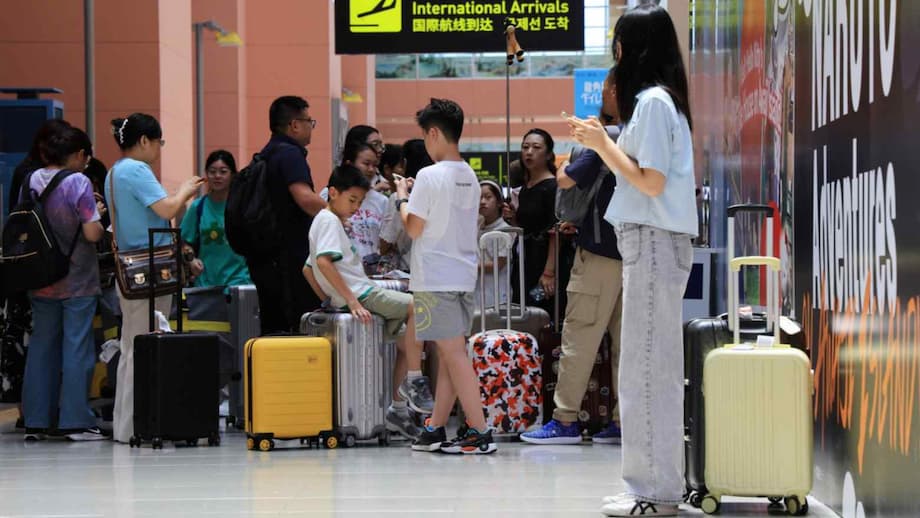A new wave of independent travel from China
China’s visitors are returning to Japan with different habits than before the pandemic. A growing share are traveling alone. During the April to June period this year, about one in four Chinese arrivals explored Japan on their own. That shift away from group itineraries is reshaping what visitors buy, where they go, and how the industry plans tours, lodging, and experiences. A weaker yen has stretched budgets, more flights are back on key routes, and social media is giving first time solo travelers the confidence to navigate Japan’s trains, neighborhoods, and language barriers.
- A new wave of independent travel from China
- How big is the surge
- Why are more Chinese travelers going solo
- What solo travelers do once they arrive
- Spending power and the weak yen
- Access and timing are changing the calendar
- How the industry is adapting
- Managing crowds and improving the experience
- Practical playbook for Japanese businesses
- Key Points
Japan’s inbound tourism has roared back. The country welcomed a record 36.86 million international visitors in 2024, according to Japan National Tourism Organization (JNTO) data. As Chinese demand recovers, the composition of trips is changing. Travel analysts tracking Lunar New Year patterns in 2025 found that solo travel among Chinese passengers rose compared with 2019, while larger group tours lost ground. Independent trips and couples’ getaways are filling planes to nearby destinations, including Japan, where the currency advantage has made longer stays and more shopping feasible for many travelers.
Momentum is visible in monthly tallies. In July 2025, China ranked first among source markets to Japan, with an estimated 974,500 visits. The return of Chinese travelers is lifting spending in major cities and drawing new attention to less traveled regions. Tour operators and online agencies are responding with more flexible products, single occupancy options, and experiences that can be slotted into personal itineraries with only a few taps on a mobile phone.
How big is the surge
JNTO figures show that 2024 set a new record for inbound travel, and China was central to the rebound. Industry summaries drawing on official data indicate that Japan received roughly 6.98 million visitors from China in 2024, a sharp increase from the year before, though still short of the 2019 peak. The direction of travel is unmistakable. During the 2025 Chinese New Year period, bookings to Japan from China more than doubled versus 2024, and volumes were about one fifth higher than the same festive window in 2019, helped by the weak yen and strong interest in winter and city breaks.
Lunar New Year data also capture a change in how Chinese travelers prefer to travel. Analysts report solo trips up by single digit percentages compared with 2019, depending on route, and couples trips also gained. Long distance travel showed solo passengers making up a large share of seats. Meanwhile, larger group tours declined steeply for both regional and long distance travel. Official monthly arrival figures and market dashboards for Japan can be viewed on the JNTO website at statistics.jnto.go.jp.
Why are more Chinese travelers going solo
Price is a powerful driver. The yen’s depreciation against the yuan and the dollar has made hotels, meals, and shopping baskets feel more affordable. Travelers who once saved up for a single big group tour are now considering a solo itinerary that can be tuned to preferences and budget. Flexibility also matters. The 2025 Chinese New Year holiday lasted eight days, and many people adjusted departure dates to avoid peak crowds. Staggered leave and hybrid work arrangements have created openings for off peak trips that are easier to plan independently than within a group package.
Demographics and digital habits are pushing the trend forward. A Japanese tour operator that tracks traveler profiles reported that 35 percent of its clients in 2024 booked as solo travelers, up from the year before. Most of those solo customers were young adults, and a large majority were women. Safety and reliability are prized. Japan’s neighborhoods, transit networks, and consistent service standards, amplified by viral content on Instagram, TikTok, and Chinese platforms, give many first time solo travelers the confidence to explore without a fixed group.
The shift is also about the kind of experiences people want. Group buses that sprint between landmarks leave little room for personal interests. Solo travelers can spend a morning in a neighborhood coffee shop, an afternoon in a craft workshop, and an evening at a niche restaurant. Travel posts and short videos trade tips on capsule hotels, llkansai day trips, ski passes, rail passes, and small group excursions that allow people traveling alone to meet others without committing to a full group tour. As independent travel grows, traditional group tours are taking a smaller share of the market, especially for regional trips.
What solo travelers do once they arrive
Japan’s classic circuit of Tokyo, Kyoto, and Osaka remains popular. Solo visitors often anchor their trip around these cities, then add highly personal experiences. Bookings show rising interest in craft workshops, local festivals, food tours, anime and gaming districts, and nature escapes. Winter brought a clear example. During the latest Chinese New Year period, a local experience platform in Japan reported a rapid rise in bookings for snow related activities and rural excursions in the Tohoku region. Tours to Zao Fox Village in Miyagi, the frost covered snow trees in Zao, and the historic Ginzan Onsen in Yamagata were booked at roughly twice the level of a year earlier. Ease of access played a role as flight links to Tohoku airports were restored from nearby markets.
Food sits near the top of many solo itineraries. Restaurant bookings in urban areas climbed as platforms integrated with local review and reservation systems like Tabelog. At the same time, orders for urban leisure activities flattened in some big cities, suggesting that more travelers traded packaged city attractions for meals, shopping, and neighborhood wandering. Lodging choices span the spectrum. Budget minded solo travelers book capsule hotels and simple business hotels near train stations, while others splurge on a key night or two in a five star property or on a private experience such as a tea ceremony with a master, a guided street food walk, or a sunrise photography session.
Spending power and the weak yen
Inbound spending in Japan is rising with the return of visitors. The Japan Tourism Agency estimated that international travelers spent about 2.1 trillion yen from April to June 2024, about three quarters more than the same period in 2023. Average spend per person rose to roughly 238,700 yen, with accommodation and shopping the largest categories. A softer currency helps overseas budgets go further, which encourages purchases of electronics, cosmetics, fashion, and specialty foods. Chinese travelers have long been strong retail customers in Japan. The current exchange rate has renewed that interest, even for solo travelers who might stay in simpler lodgings but still pay up for a limited edition jacket or a high end rice cooker to bring home.
Solo travelers also tend to prioritize convenience. Many will pay for a late night airport transfer, same day luggage delivery, or a last minute ticket to a special exhibition rather than spend hours figuring out every detail themselves. The willingness to spend selectively, coupled with personal control over the schedule, can increase revenue for businesses that offer fast and easy add ons at the right moment in the journey.
Access and timing are changing the calendar
International connectivity has improved. Narita Airport handled more than 20 million non Japanese international passengers in 2024, up strongly from 2023 and close to 2019 levels. Aircraft movements have been growing as airlines add back capacity. Around holiday peaks, Chinese travelers adjusted their timing to spread out travel. Analysts tracking Chinese New Year bookings in 2025 saw pronounced departure waves before the official holiday began and then another surge during the break for short regional getaways. The extended holiday made it easier for solo travelers to plan a trip that dodged the largest crowds.
Seasonality is sharpening. Japan’s spring and autumn, long favored for cherry blossoms and foliage, are drawing record attention. Industry forecasts pointed to very high spring 2025 volumes, with some weeks likely to surpass four million total visitors. Independent travelers are a big part of that surge. Flexible itineraries let people adjust city sequences to catch blossoms in different regions or to chase a forecasted powder day in Hokkaido. That flexibility supports travel into secondary airports and smaller cities that benefit from new direct flights and improved rail connections.
How the industry is adapting
Online travel agencies are nudging visitors beyond the golden triangle of Tokyo, Kyoto, and Osaka. Trip.com says it is investing to highlight lesser known destinations and is working with local governments and suppliers across Japan to bundle experiences. The company’s live commerce platform added a shopping cart that issues coupons when users combine multiple destinations in a single purchase, encouraging itineraries that include regional stops. Its in app assistant, TripGenie, proposes routes and activities that fit personal preferences and time windows. That guidance is attractive to solo travelers who want expert suggestions without giving up control.
Suppliers are making changes too. Hotels are revising inventory and pricing to make single rooms easier to book, without punitive single supplements. Tour companies are balancing product lines, adding small group options and micro experiences that can be joined for a few hours. Rail and bus operators are promoting night services and off peak passes that make regional hops cheaper and more comfortable. At the high end, demand for private guides, exclusive tastings, and after hours access has grown, especially among travelers who save on accommodation but decide to spend on an unforgettable experience.
Managing crowds and improving the experience
Japan’s record arrivals have drawn attention to crowding. Kyoto, Tokyo, Osaka, and Okinawa feel the strain in peak seasons. In April 2024, Kyoto’s hotels recorded a foreign guest ratio of about 68 percent, well above pre 2020 levels. Many travelers still want those iconic moments at Arashiyama or Fushimi Inari, but the experience is better when pressure is lower. Spreading visitors across the day and across neighborhoods is critical. Timed entry at sensitive sites, clearer wayfinding that routes people to lesser known gates, and smart digital alerts about congestion can help.
Solo travelers bring particular needs. Clear signage in Chinese and English reduces confusion. Luggage lockers, baggage delivery services, and easy late check in policies reduce friction. City cards that bundle transit with a handful of experiences appeal when the weather changes or energy flags. Acceptance of widely used Chinese mobile payments alongside international cards helps close sales at small shops. Reliable Wi Fi helps solo visitors navigate and reduces anxiety. Simple safety guidance in metro stations and on scenic trails, presented without being heavy handed, goes a long way.
Practical playbook for Japanese businesses
Companies that fine tune for independent Chinese visitors can win loyalty quickly. The following actions target common pain points and growing preferences.
- Offer clear single room pricing and make it easy to book one night at a time.
- List safety and neighborhood details on property pages, such as lighting, night noise, and distance to the nearest station.
- Enable Alipay and WeChat Pay at point of sale, alongside major cards and IC cards used on transit.
- Create short, bookable micro experiences lasting two to three hours that start near major stations.
- Provide real time chat support in Chinese and English during check in windows and evening hours.
- Bundle luggage delivery with room bookings or train passes to ease intercity moves.
- Publish sample solo itineraries for one day, three days, and five days in your city, including budget and premium options.
- Use social media friendly maps and photo spots to encourage sharing that brings the next wave of customers.
- Work with regional partners to promote two city or three city routes that include at least one secondary destination.
- Coordinate with local authorities on crowd management messages, and share them in your channels on peak days.
Key Points
- About one in four Chinese visitors to Japan traveled solo in the April to June window this year.
- Japan welcomed a record 36.86 million international visitors in 2024, according to JNTO.
- During Chinese New Year 2025, Chinese travel to Japan more than doubled compared with 2024 and was about 20 percent above 2019 levels for that period.
- Market data shows solo trips among Chinese travelers increased compared with 2019, while larger group tours fell sharply.
- In July 2025, China ranked first among source markets to Japan with an estimated 974,500 visits.
- Average spend per international visitor hit about 238,700 yen in the April to June 2024 quarter, with accommodation and shopping leading.
- Young adults, many of them women, make up a large share of solo travelers, and safety, flexibility, and authenticity are key priorities.
- Regional experiences are gaining traction, including winter activities in Tohoku and small group cultural tours.
- Online agencies and local partners are steering visitors beyond Tokyo, Kyoto, and Osaka with coupons, AI route planning, and bundled experiences.
- Simple steps like single friendly pricing, mobile payments, micro experiences, and luggage solutions help businesses serve solo travelers better.




